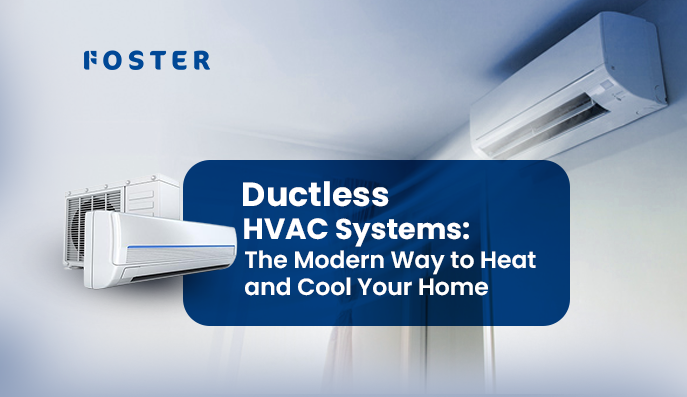Indoor air quality has become a serious concern in residential and commercial settings across the globe. People spend a substantial amount of their time indoors, with some estimates as high as 90%. The air you breathe within your property has a direct effect on health, productivity, and overall well-being. Knowing when to book an air quality test can enable you to identify issues before they develop into serious health conditions.
Understanding Indoor Air Quality Testing
Testing air quality involves the complete analysis of indoor pollutants, which includes particulate matter (PM2.5 and PM10), volatile organic compounds (VOCs), carbon dioxide, carbon monoxide, mold spores, and a host of other contaminants. Modern environments—with tightly sealed buildings, synthetic materials, and complex HVAC systems—create unique challenges for maintaining healthy indoor air. According to the Environmental Protection Agency (EPA), indoor air can be two to five times more polluted than outdoor air.
Professional indoor air quality testing services, using advanced monitoring devices and sampling techniques, compare pollutant concentrations against established health and safety standards to ensure that your space is meeting regulatory requirements and is a safe environment for occupants.
10 Critical Signs You Need Indoor Air Quality Testing
Persistent Respiratory Symptoms
Coughing, sneezing, wheezing, or asthma attacks that get better when occupants leave the building usually mean that poor indoor air quality is the problem. Most of these respiratory problems are caused by common airborne pollutants, dust mites, and mold spores, especially in spaces that have inadequate ventilation or filtration.
Unexplained Headaches and Fatigue
Symptoms can include recurring headaches, dizziness, difficulty concentrating, or chronic fatigue-particularly symptoms that disappear outdoors-that are indicative of high levels of carbon dioxide, VOCs, or inadequate ventilation in your office or home environment. They substantially affect work performance and quality of life.The World Health Organization (WHO) identifies poor indoor air quality as a significant risk factor for various health conditions.
Visible Mold Growth
The appearance of mold on walls, ceilings, or around air conditioning vents and bathrooms indicates excessive moisture and possible air contamination. Molds emit spores and mycotoxins into the air, which create serious health hazards that demand immediate air quality inspections and remediation.
Unusual or Musty Odors
Lingering chemical smells, musty odors, or stale air circulation in your property may signal the presence of hidden mold growth, bacterial contamination, or a poor HVAC system performance. These conditions call for expert indoor environment testing to find the source and correct it.
Excessive Dust Accumulation
Surfaces gathering dust after a short time following cleaning indicate poor air filtration or contaminated HVAC ducts. Excessive dust does not only cause housekeeping problems but also carries allergens, chemicals, and particulates compromising respiratory health by circulating these elements indoors. The National Air Duct Cleaners Association (NADCA) provides guidelines for maintaining clean air distribution systems.
Inconsistent HVAC Performance
Commonly, uneven temperature distribution, reduced heating or cooling efficiency, or unusual noises from your HVAC system are signs of possible airflow obstruction or contamination, calling for HVAC air quality testing. These conditions make equipment work harder, which increases energy consumption and decreases the quality of air circulation. Our HVAC equipment solutions can help optimize your system’s performance.
Recent Renovation or Construction
Construction activities, either in your building or on developments nearby, introduce dust, VOCs in paints and adhesives, formaldehyde in new materials, and many other contaminants into indoor air. Testing for air quality after construction ensures that your environment is safe to occupy and free from hazardous chemical off-gassing. Learn more about volatile organic compounds from the EPA.
Increased Allergies or Sick Building Syndrome
Several occupants suffering from similar symptoms-allergies, irritation of the eyes, throat, or general feelings of sickness-particularly in office environments, can be symptoms of sick building syndrome due to poor indoor air quality and a lack of ventilation. Such a trend in symptoms is a sure sign that needs professional evaluation.
High Indoor Humidity Levels
Condensation in the windows, damp walls, or sustained high humidity over 60% encourages mold proliferation and deterioration of air quality. On the other hand, very low humidity-when levels fall below 30%-may trigger respiratory discomfort and static electricity. Professional air quality monitoring can measure humidity levels and find inefficiencies in the HVAC systems.
Aging HVAC Systems
Older HVAC systems accumulate debris, lose efficiency, and may house bacteria, mold, and dust. Commercial air quality testing is key in properties whose HVAC systems are over 10 years old, in order to ensure optimal performance and healthy air circulation. Consider exploring HVAC rental solutions if replacement or temporary alternatives are needed.
What Does Professional Air Quality Testing Measure?
Full indoor air quality testing will analyze several parameters to give a complete picture about your indoor environment:
- Particulate Matter: PM2.5 and PM10 particles from dust, pollen, combustion, and outdoor pollution that penetrate indoor spaces
- Volatile Organic Compounds: Formaldehyde, benzene, toluene, and other chemicals from building materials, furnishings, cleaning products, and office equipment
- Carbon Dioxide and Carbon Monoxide: Key indicators of ventilation effectiveness and potential combustion issues from appliances.
- Biological Contaminants: Mold spores, bacteria, viruses, and allergens affecting respiratory health and immune function
- Temperature and Humidity: Environmental factors that affect comfort, mold growth potential, and airborne pathogen survival
The American Society of Heating, Refrigerating and Air-Conditioning Engineers (ASHRAE) establishes ventilation and indoor air quality standards widely adopted across industries.
Benefits of Professional Air Quality Testing Services
Investing in professional indoor air quality testing offers numerous advantages:
- Health Protection: Early detection of harmful pollutants prevents respiratory diseases, allergies, neurological problems, and long-term health complications.
- Energy Efficiency: Detection of HVAC performance issues and optimization of ventilation reduce electric consumption while maintaining healthy air exchange rates. Modern HVAC equipment is designed for both efficiency and air quality.
- Regulatory Compliance: Maintaining compliance with occupational health standards, building codes, and environmental regulations.
- Property Value: Documented indoor air quality improves the appeal and marketability of a property, whether residential or commercial.
- Productivity Enhancement: Improved air quality in office environments boosts cognitive function, reduces absenteeism, and enhances employee wellbeing. Research from Harvard’s T.H. Chan School of Public Health demonstrates the cognitive benefits of better indoor air quality.
- Peace of Mind: Professional testing provides objective data about your indoor environment, eliminating guesswork and uncertainty. Discover practical steps to improve indoor air quality after testing.
Choosing the Right Air Quality Testing Provider
Some of the most important factors to consider when choosing home air quality testing services or commercial providers include:
- Accreditation and Expertise: Check on their certification, laboratory accreditations, and experience in different building types and contaminant testing.
- Comprehensive Testing: Ensure the service provider offers comprehensive indoor environment testing covering all relevant pollutants, not only basic parameters.
- Advanced Equipment: Ensure calibrated, professional-grade IAQ monitoring devices that are applied according to industry standards are utilized.
- Clear Reporting: Providers offering clear, understandable reports that detail specific measurements, comparisons against standards, along with action items for improvements.
- HVAC Integration: Select companies specializing in HVAC systems and mechanical engineering to develop comprehensive solutions to root causes.
- Follow-up Support: Select providers who offer remediation guidance and post-improvement verification testing
When to Schedule Air Quality Testing in your Business
Indoor air quality testing is recommended for residential properties annually and for commercial spaces bi-annually. It should also be scheduled in cases of renovation, water damage, health complaints by occupants, or modification in the HVAC system. One should not wait for severe symptoms-proactive testing finds the problems before health and property values are adversely affected. One should not wait for severe symptoms—proactive testing finds the problems before health and property values are adversely affected. Once you’ve identified issues, explore our guide on improving indoor air quality for actionable solutions.
Protect Your Indoor Environment with Foster International
At Foster International, we understand that indoor air quality directly impacts health, comfort, and operational efficiency. Our comprehensive HVAC services include air quality assessments, system optimization, and maintenance solutions designed to create healthier indoor environments.
With decades of experience in MEP and partnerships with leading HVAC manufacturers, we offer integrated solutions that provide indoor air quality while improving energy efficiency and system performance. Our expert team combines technical knowledge with practical experience to deliver customized solutions for residential, commercial, and industrial applications.
Don’t wait for your symptoms to get worse. For professional air quality testing services, reach out to Foster International today for expert advice on how to create a healthier indoor environment for your home or business. Our team is ready to deliver customized solutions that protect occupant health and optimize HVAC performance.


 Previous Post
Previous Post
